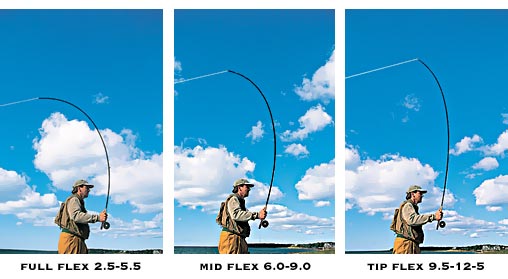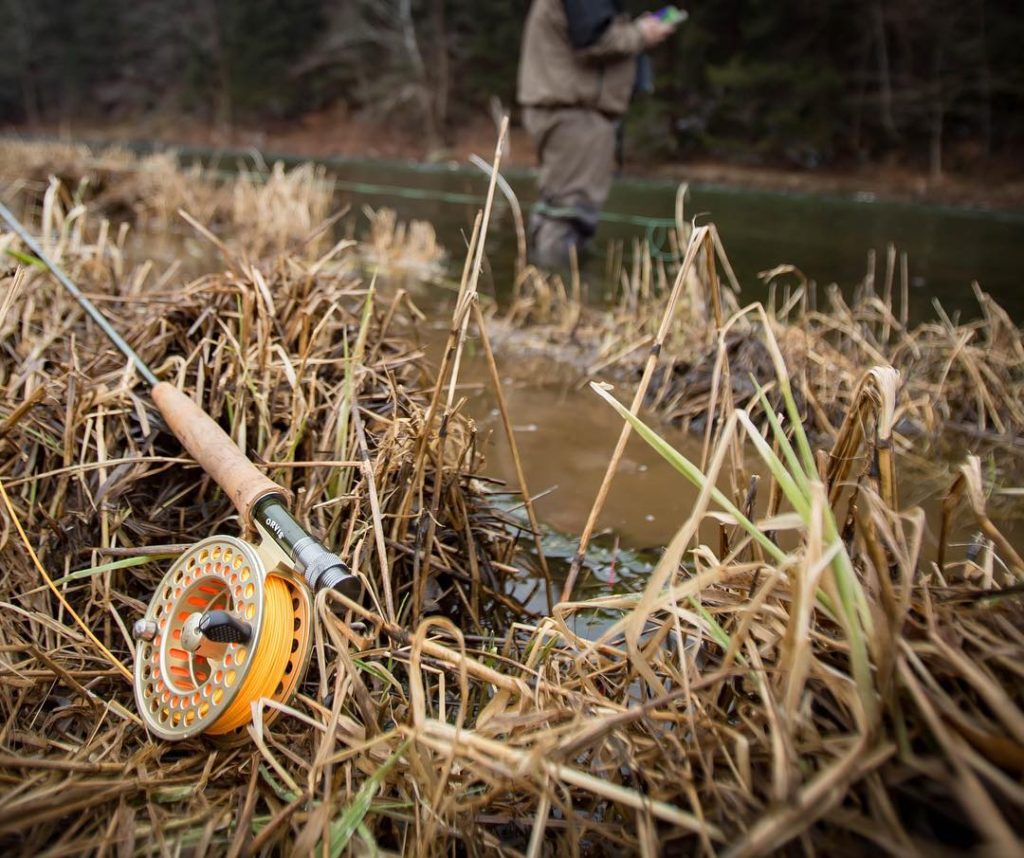Fly fishing is a great deal of fun due to the fact that the user will often manipulate the “feel” of the rod in order to achieve the desired results. Thus, we can think of the rod as an extension of the individual as opposed to a completely separate entity. Having said this, much more than instinct is involved when referring to fly rod action and the associated results. Let’s break this subject down into a few different categories in order to fully understand the very real science that goes into such amazing technology.
Breaking the Rod Down into Three Discrete Sections
Even a novice fly fishing enthusiast understands that a rod can be broken down into three segments:
- The tip of the rod.
- The middle section.
- The butt.
Due to the simple laws of physics, the movements that a user places upon the butt are then translated to the middle and finally, exhibited in the tip. The line then reacts to the force sent from the tip. This is ultimately what goes into a cast. The “action” of a rod is defined by how the three sections of rod are linked together. Having said this, there is actually much more than meets the eye when determining the action of a specific rod.

All About Integrated Relationships as a Part of the Whole
One of the mistakes that is often made involves the generalised use of terms such as “stiffness” and “flexibility” too loosely. For instance, stiffness is not always uniform. Some rods are equipped with stiff tips and relatively flexible butts. The exact opposite can also be true. Let us illustrate this by taking a look at the three main types of fly fishing rods and how their actions translate in relation to the three portions mentioned above:
- A fast action fly rod will bend mostly at the tip.
- A medium-action variant bends more towards the middle of the blank.
- A slow-action rod exhibits flexibility throughout the entire length of the blank.
If we think about it for a moment, the situations mentioned above actually make a great deal of sense. A flexible tip mated with two stiffer sections will provide more of a “whipping” effect during casting and recovery. On the other hand, rods which are much more forgiving in terms of their flexibility will cast and recover slower due to the fact that less whipping action is present when casting and recovering a line. Now that we have briefly examined each of the three sections of a fly fishing rod and their general relation to speed, let’s move on by examining fast, medium and slow variants.
Fast, Medium and Slow Fly Fishing Rods
As mentioned previously, fast fly rod action tends to be associated with a stiffer tip alongside a more flexible middle section and butt. The main benefit here is that these rods are more powerful and they enable fishermen to cast at longer distances. Due to the fact that the line is released at a faster speed, these rods can also be ideal for those who normally fish during windy conditions.
Medium-action fly rods (sometimes called moderate action rods) often represent the “middle of the road” when speaking of a combination between flexibility and performance. A deeper flexion in the middle of the blank is often beneficial when an individual needs to make subtle changes to his or her cast. Some feel that medium-action rods also provide the best “feel” when casting and recovering. These rods are still able to handle windy conditions while offering a substantial amount of recovery strength when reeling in a larger fish.

Slow-action rods are defined by the overall sense of flexibility found within the blank. This configuration is said to represent the most traditional form of fly fishing and as you may have guessed, it is often used when casting shorter distances (such as when fishing streams or small rivers). The responsiveness of this rod will also allow users to exhibit greater control of their movements; resulting in an increased level of accuracy. However, it should be noted that slow-action rods are not suited for windy conditions and they are generally not used when casting longer distances.
Which Fly Fishing Rod Action is the Best for You?
This is a question which many enthusiasts struggle with and there are several variables to address when finding the answer. The first involves the type of fishing that you enjoy. As mentioned in the last section, a fast action fly rod is better for longer distances and when you require the highest levels of blank strength during recovery. Open-water trout and salmon fishing are two instances when this can come in handy. On the contrary, fishing in streams, gullies or rivers is generally better suited for a slow- to medium-action fly rod.
The second variable to take into account is your level of experience. Let’s always keep in mind that fly fishing involves being able to accurately feel the rod and to subsequently respond to its actions. Many experts therefore believe that slow-action variants are the best for beginners and novices. As you will be able to maintain better control of your line, you can learn to incorporate accuracy into your cast.
If you are looking for a synergy between performance and control, a medium-action rod is the best option. Not only will you be able to achieve a fair amount of accuracy, but these rods are suitable for a wide variety of weather conditions and they are associated with a fairly long casting range.
Making the Best Decision
Choosing the best fly fishing rod for your needs should always take into account the factors mentioned above. Still, every individual has his or her own unique preferences. The aforementioned guidelines will nonetheless be able to point you in the right direction and help you to make the appropriate decision when the time is right.
Images:
1. https://www.orvis.com/s/fly-rod-flex-index/24
2. https://www.imgrumweb.com/george_romanczuk